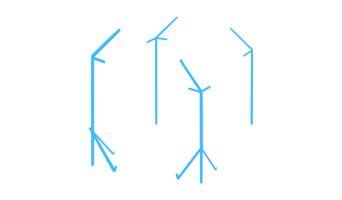In two recent design projects I was confronted with the potential downsides of functional specialization as a guiding principle for organizational unit structuring.
Both cases involved organizational units defined to specialize in one specific function
The functions were hiring in one case and managing the organizational interface to a key outside stakeholder in another. Each unit owned a bundle of management processes and services which where run in high volumes while at the same time requiring expert judgment at several points of the process. Potential for technical process automation was there, but limited. Most processes where one-man shows, involving little need for collaboration among colleagues to get the job done. While those considerations preceded our engagement, it was a safe guess that the management decision to create those functionally specialized units was driven by the desire to realize benefits from standardization through efficiency gains.
The pitfalls of functional unit specialization
Both units, it turned out, faced high levels of staff turnover. Even worse, process standardization and formalization were avoided to a significant extent. While coming at the expense of efficiency, the team members where allowed high levels of autonomy and the build-up of implicit knowledge and idiosyncratic approaches (which in turn made replacements and handovers more complicated and costlier than necessary). At the same time, the constantly high workload prevented teams from driving project work and delivering innovation with regard to their respective service catalogues. The sensible decisions for focused specialization in the pursuit of efficiency gains fired back – the applied criteria for structuring those units proved too narrow. From an organizational effectiveness point of view, the units where on the way to ending up in the worst of all worlds.
While there are many aspects to those cases, one important point with regard to organization design is that the criteria applied to design and decide upon unit specialization probably proved too limited in both cases. The amount of knowledge work and the profiles of the people required in those jobs was at odds with a taylorized approach to process standardization reflected in the unit structuring.
Avoiding – or correcting – such a mis-design would require a comprehensive application of key criteria and to evaluate structuring options. In addition, standardization in organizations often is a question of balancing centralization and decentralization within the organizational structure.
Click on the link below to take a free preview of the Organizational Structure Kit and its according tools.



